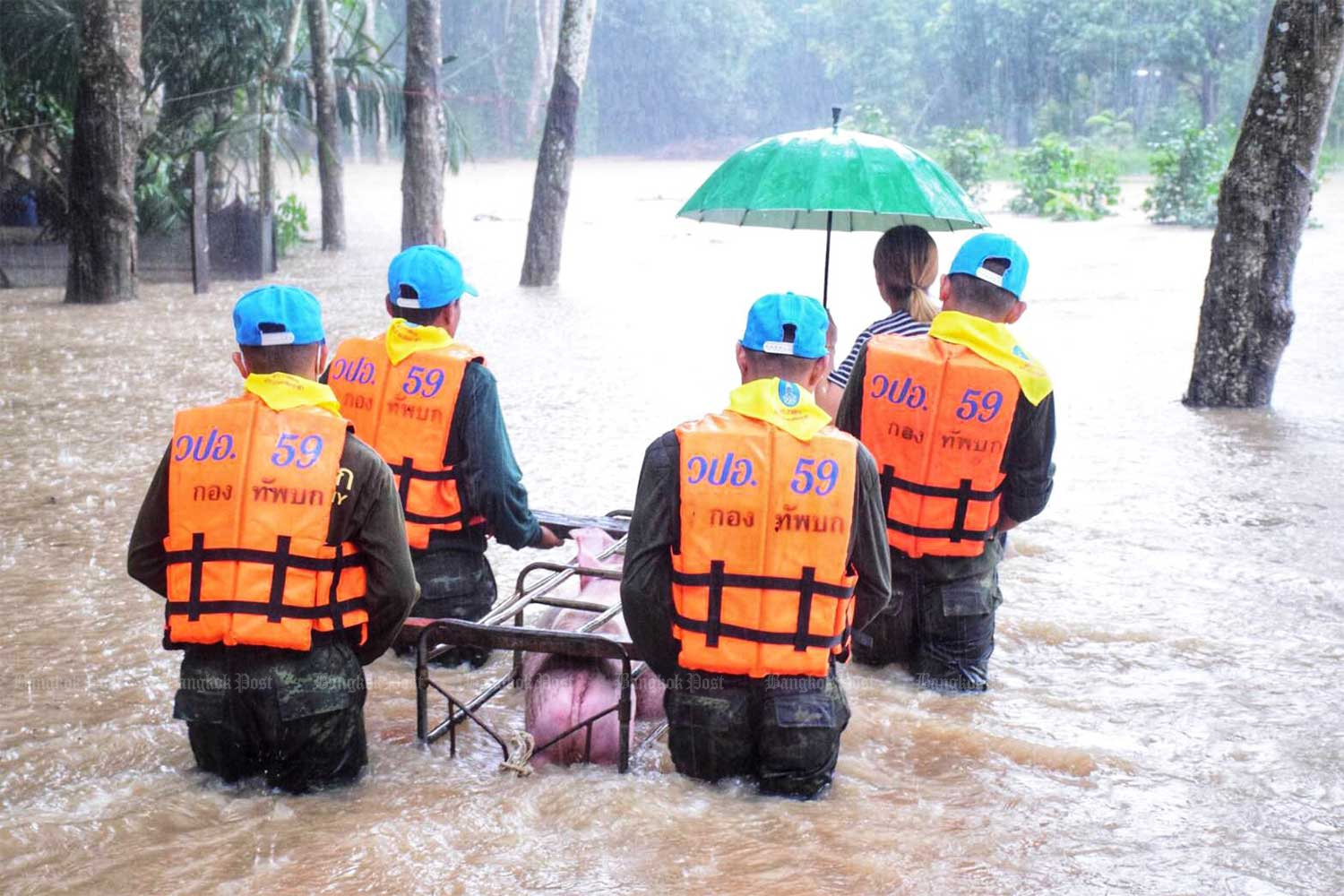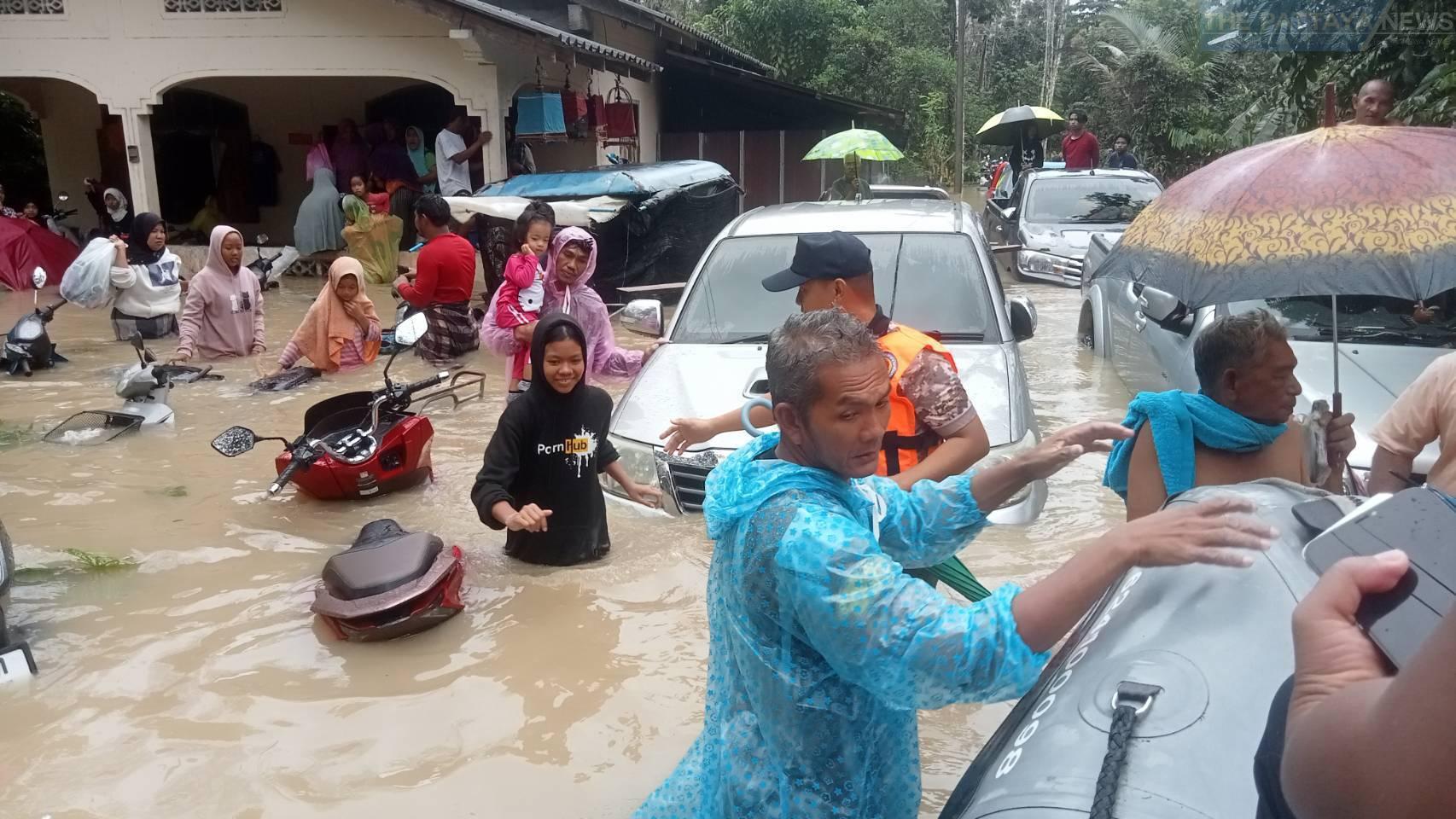Despite the fact that floodwater levels in Yala and Narathiwat in southern Thailand have begun to decrease, the death toll has risen to at least 12. The situation in Pattani, southern Thailand, remains critical.
Public Health Minister Cholnan Srikaew has received word that the death toll has risen to 12, with eight persons killed in Narathiwat, three in Yala, and one in Pattani.
Flooding has forced the closure of 11 public health service centers in Narathiwat, 12 in Yala, and 11 in Pattani. The ministry has distributed 4,200 first-aid kits to flood victims and established additional evacuation centers in the three provinces.
To assist over 7,000 individuals, the ministry has organized 43 evacuation centers across three regions.
Meanwhile, the Thai State Railway said its southern route to the deep south will be closed at Yala due to the flooding in Narathiwat. It provides transit buses that transport passengers to the province.
The flood situation in Pattani remains catastrophic, with overflow from the Pattani and Sai Buri rivers inundating the town on Friday. The water level in Muang Pattani municipality was rapidly rising.
Several highways were flooded, inundating businesses and homes. Sixty-six pumps have been constructed throughout the city to quickly drain the water, but additional water continues to flood in.
Floodwater levels along the Sai Buri River in Pattani were at their highest in nearly five decades, according to residents, since water was rushing from Narathiwat to the sea through Pattani.
An alert has been made urging residents not to let their children play in the water to avoid getting swept away by powerful currents. Flooding has affected 6,603 individuals in Muang district, affecting six tambons, 14 villages, and 1,767 houses.
Pattani, Narathiwat, and Yala provinces have been the hardest hit of the five southern provinces that have seen some of the worst floods in decades in the last week.
Floods affected 93,220 families in 25 districts, according to the Department of Disaster Prevention and Mitigation.
Southern Thailand is prone to floods every year, especially during the monsoon season, which lasts from May to October. During this time, the region receives considerable rainfall, resulting in swollen rivers and flooding low-lying areas.
Floods are widespread in the provinces of Surat Thani, Nakhon Si Thammarat, Krabi, Phatthalung, Trang, and Phang Nga.
Local authorities and communities in southern Thailand often take precautions to limit the impact of flooding, such as building flood walls, early warning systems, and evacuation plans.
Despite these efforts, the region continues to experience difficulties in managing and preventing flooding, particularly during seasons of very heavy rainfall. It is crucial to remember that the situation might change from year to year, and the efficiency of preventive efforts can influence the severity of the yearly flooding.
Furthermore, infrastructural and disaster management upgrades may be continuing to address the reoccurring issue of floods in southern Thailand.
The following factors contribute to floods in southern Thailand:
Monsoon Rains; The monsoon brings heavy rains to the region, raising river levels and causing extensive flooding.
Southern Thailand’s terrain, with its low-lying areas and numerous rivers, renders it prone to floods.
Inadequate or badly maintained drainage systems add to the intensity of flooding in some regions.
Rapid development and poor land use planning can worsen flood damage by diminishing natural water absorption areas and increasing the risk of flash floods.
Deforestation; Deforestation can cause soil erosion and impair the land’s natural ability to absorb water, increasing the chance of flooding.






